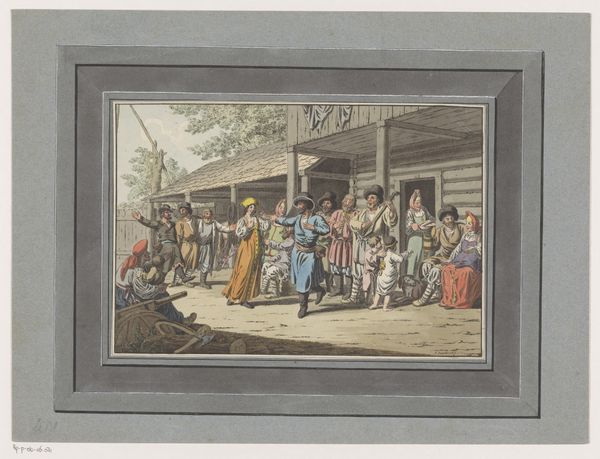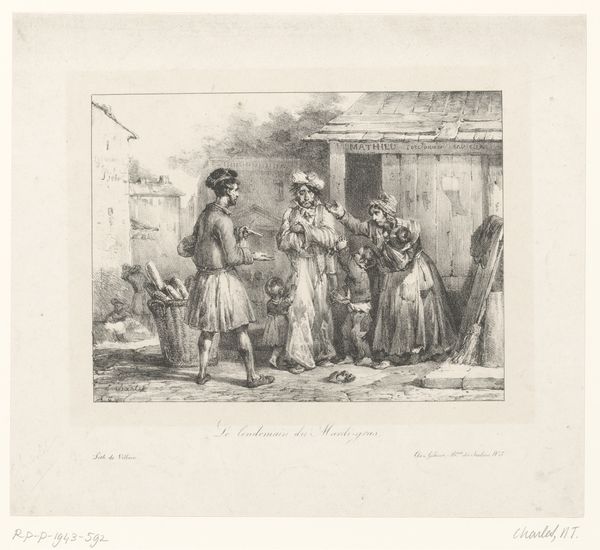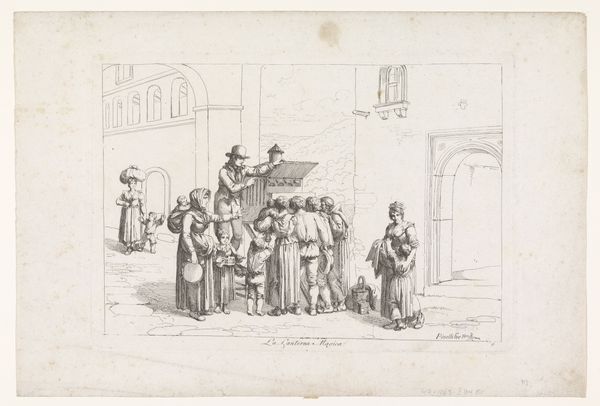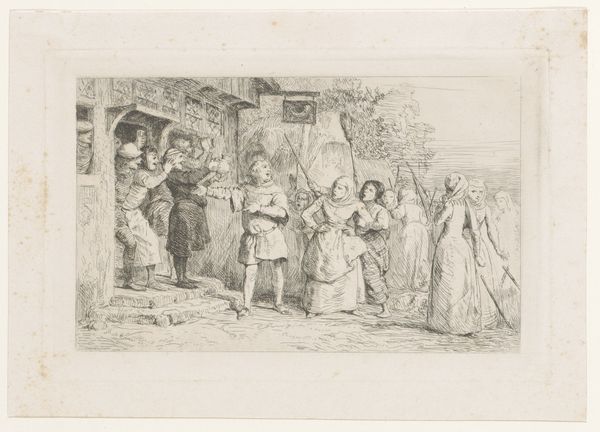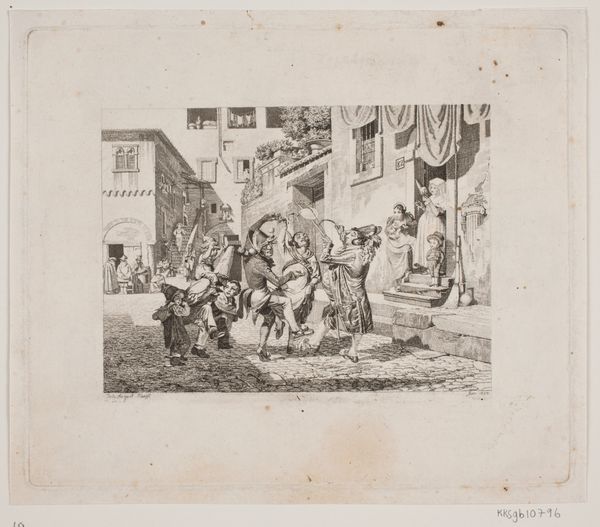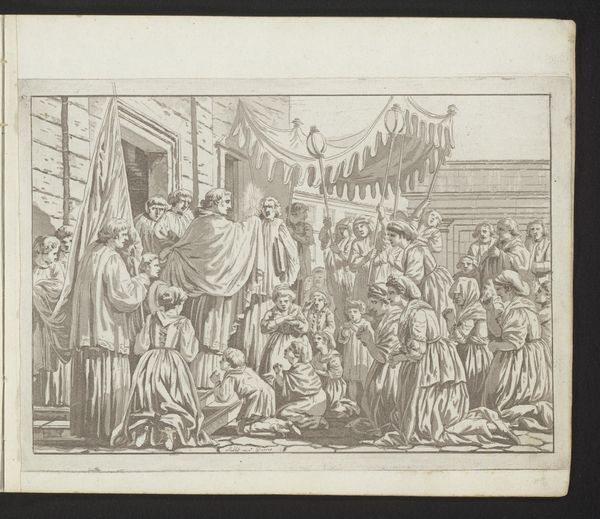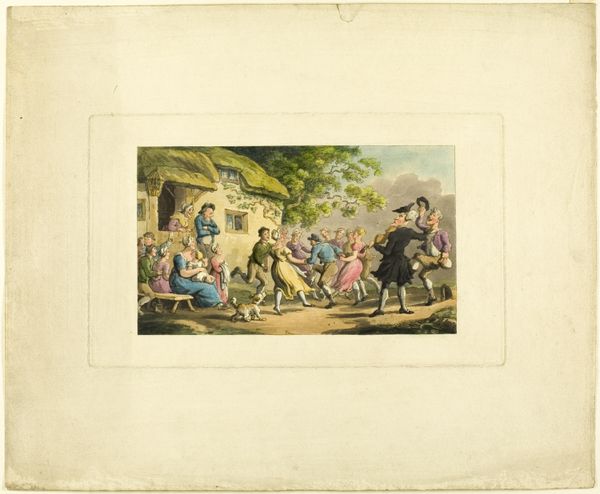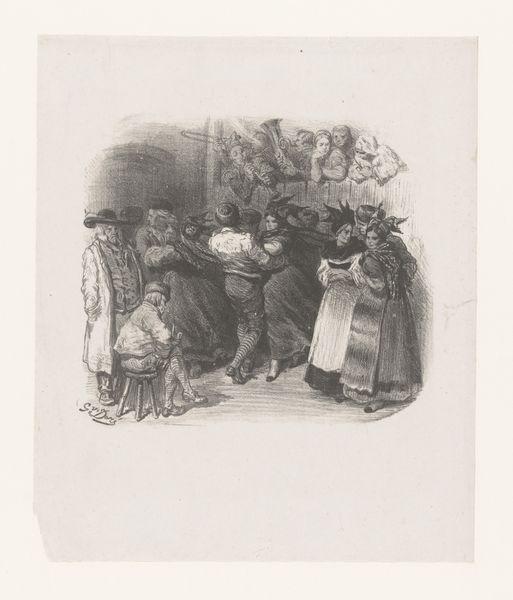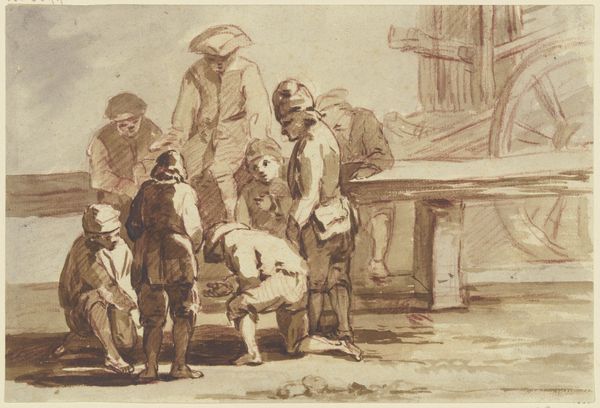
drawing, watercolor
#
drawing
#
narrative-art
#
landscape
#
figuration
#
watercolor
#
romanticism
#
watercolour illustration
#
genre-painting
Dimensions: height 180 mm, width 262 mm
Copyright: Rijks Museum: Open Domain
Editor: Here we have "Vechtende mannen en toeschouwers," or "Fighting Men and Spectators," a watercolor and ink drawing created around 1805 by Christian Gottfried Heinrich Geissler. It’s a pretty bustling scene – a street fight happening in what looks like a small village, but with very nicely dressed onlookers. What do you see when you look at this work? Curator: For me, it's all about understanding the material conditions and social context of this seemingly simple genre scene. Consider the labor involved. Someone ground the pigments, prepared the paper, carefully rendered each figure and detail with watercolor and ink. These weren't mass-produced materials. And think about *who* had access to them. Editor: That's a good point! It's not like everyone could just pick up some watercolors and start painting. Curator: Exactly! The access to and means of producing the materials already implies a certain social class, doesn’t it? Who was the likely patron, what purpose did the artwork serve, and how did the depicted subject matter – the brawl and the bystanders – play into the social narratives of the time? The rendering feels a bit romanticized and definitely filtered. What sort of message would that be sending about such a fight and the spectators who might enable it, and to whom? Editor: So, instead of focusing on just the aesthetic, you're digging into the ‘how’ and ‘why’ it was made, and who could afford it. It really challenges that traditional divide between “high art” and the everyday. Curator: Precisely! By exploring the materiality and process, we move beyond a simple depiction to reveal the underlying social structures and power dynamics at play. It moves from an artwork, in the pure aesthetic sense, to a social product with a role. Editor: This has completely changed how I view the image. I was initially just focusing on the scene itself. Now I can start questioning its place within a wider economic and social landscape. Curator: And that is how we, as observers, get the most complete and informed experience of an artwork, I think. Thank you for asking.
Comments
No comments
Be the first to comment and join the conversation on the ultimate creative platform.
